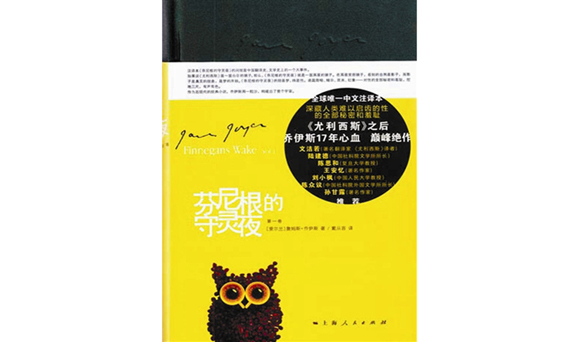The new translation of James Joyce’s epically complex Finnegans Wake into Chinese has become an unexpected success. The first print run of 8,000 copies sold out in just under five weeks and a second printing is on order to satisfy China’s still-increasing demand for Joyce’s book.
The translation was undertaken by Dai Congrong, a professor at Fudan University in Shanghai, and clocked in at eight years. Both Dai and her publisher, Gray Tan, were more than surprised at the translation’s success. In China, the average run for a translation is about 5,000 copies, but the Shanghai News and Publishing Bureau reported that the rapid sales of “Fennigan de Shouling Ye” made it the number two best-selling publication in the prestigious “good book” category, after a new biography of Communist re-formist Deng Xiaoping.
“At first I felt very surprised, and I feel very surprised now still,” says Dai. “I thought my readers would be scholars and writers, and it wouldn’t be so popular.”
But just because it’s popular doesn’t mean it is any less opaque. In a statement reported by the Shanghai People’s Publishing House, Dai said “I would not be faithful to the original intent of the novel if my translation made it easy to comprehend.” Dia invented new Chinese symbols for the text and consciously misused traditional Chinese grammar in her attempt to remain true to the mode of Joyce.
While the success of the translation has been attributed variously to the universal intrigue about its inscrutability, a massive urban billboard campaign (the first of its kind according to the state-run Xinhua news agency), or, more skeptically, owning it as a bourgeois status symbol, its heralded publication in China makes all the more relevant Joyce’s thunderous multi-lingual onomatopoeia: “bababadalgharaghtakamminarronnkonnbronntonnerronntuonnthunntrovarrhounawnskawntoohoohoordenenthurnuk!”
New Chinese Translation of Joyce Becomes Best-seller

The popular Chinese translation of James Joyce's Finnegans Wake.

Leave a Reply